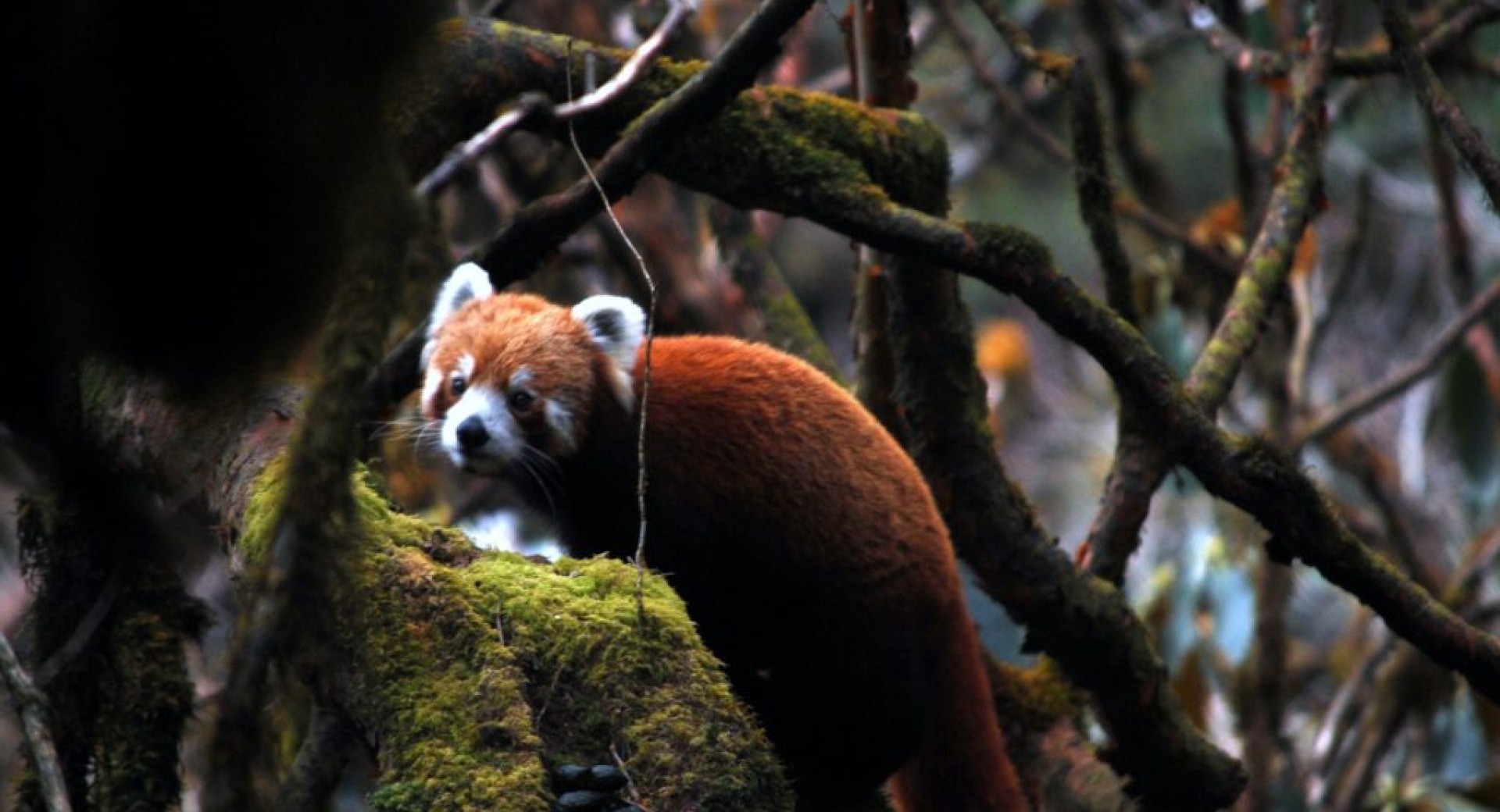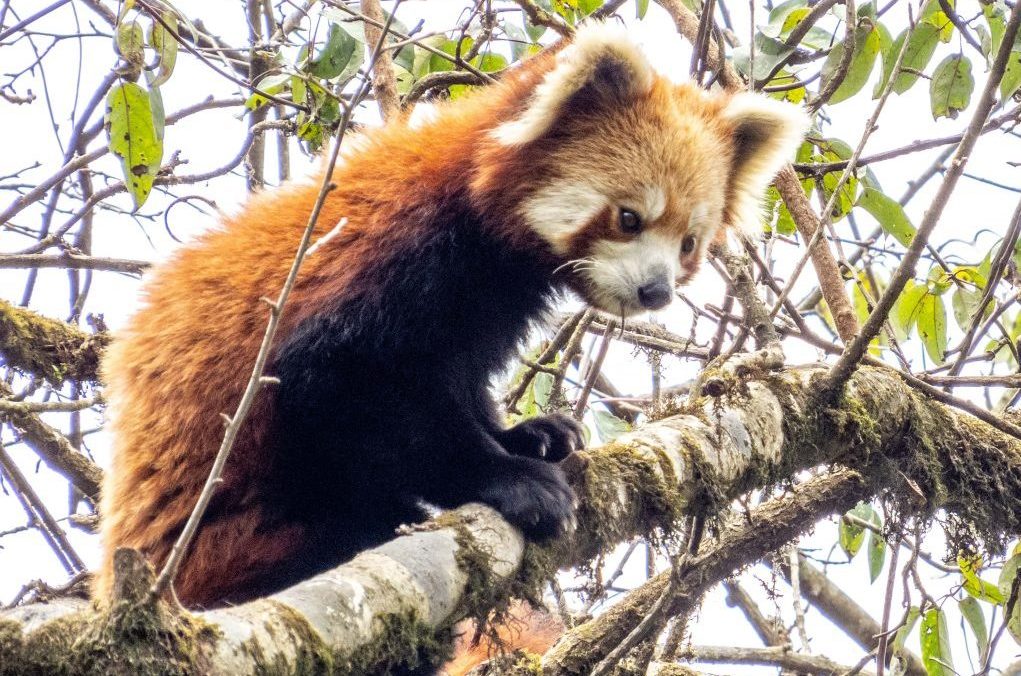
Once again, red pandas find themselves one step closer to extinction.
For the second time in nearly two decades, their status on the International Union for the Conservation of Nature's Red List of Threatened Species has regressed from "vulnerable" to "endangered."
"This means the species is moving closer to a perilous state, and if it goes this way it could become extinct in the wild," wrote biologist Pritpal Soorae, via email. Soorae is program officer for the IUCN/Species Survival Commission's Re-introduction Specialist Group. "In most cases animals and plants go extinct due to human-induced reasons such as habitat destruction, illegal trade, etc."
The purpose of The IUCN Red List is to identify and highlight the animals and plants most at risk of extinction. An animal ends up on the list after it has been assessed and its status determined, Soorae wrote.
IUCN has been tracking the conservation status of various species and subspecies worldwide for 50 years. The elusive red panda, whose range includes China, Myanmar, India, Nepal and Bhutan, was last assessed in April 2015, according to IUCN's website.
 Global red panda range on topographic map.
Global red panda range on topographic map.
Red panda expert Angela Glatston was one of the people who evaluated the red panda for the IUCN. "So when the red panda's status came up for review, I looked through all the literature - especially that produced since the last time that the red panda status was reviewed," she wrote via an email interview. "I contacted people currently working on pandas in the field for information. There is a structured form to complete which asks for information on distribution, numbers, threats, etc. Then I looked at the criteria for status. The information on red panda suggested endangered so that was my recommendation. This report and recommendation are reviewed by the IUCN, and in this case they were accepted."
While Glatston estimates the global zoo population of red pandas to be 700, the exact number of them in the wild is unknown. Efforts to quantify the population have used differing techniques.
But she cited habitat loss and fragmentation due to human activity, poaching, climate change and people moving into red panda habitat with their herds and dogs as being factors negatively impacting the red panda population and, therefore, justifying the "endangered" designation.
 Wood collected from local forest for fuelwood.
Wood collected from local forest for fuelwood.
 Local community member and dog.
Local community member and dog.
"The significance of this change in status will hopefully make it easier for people to get money for red panda research and conservation," Glatston wrote. "Also it hopefully will make people more aware of the species and its problems."
The fact that the red panda population is under threat should alarm people, said Tara Easter, a staff scientist with the Center for Biological Diversity, in a phone interview. The center is a nonprofit organization based in Tucson, Ariz., that works to protect endangered species through petitions and other grassroots efforts as well as legal action."One of the sayings that tends to shock people is we're in the beginnings of a sixth mass extinction," Easter said. "We're losing species faster than we can name them."
In a research article published in Science Advances in June of last year, Stanford University biologist Paul Ehrlich and others presented their assessment that the world's humans have begun to kill off species of other living things at a rate far greater than anything seen in the last 65 million years.
"If the currently elevated extinction pace is allowed to continue, humans will soon (in as little as three human lifetimes) be deprived of many biodiversity benefits," the scientists wrote. "On human time scales, this loss would be effectively permanent because in the aftermath of past mass extinctions, the living world took hundreds of thousands to millions of years to rediversify."
One of the benefits of diversity is wellness. How diverse an ecosystem is directly correlates with how healthy it is, Easter said. The more diverse the ecosystem, the greater the buffer it has to prevent disease outbreaks, she said.
In scientific terms, this is known as the "dilution effect hypothesis." After analyzing data from more than 200 assessments of the relationship between disease and biodiversity, scientists in the July 2015 issue of the scientific journal Proceedings of the National Academy of Sciences of the United States of America (PNAS) concluded that biodiversity decreases the spread of parasites as well as animals' consumption of plants.
While the outlook for red pandas may be bleak, the situation isn't hopeless, according to experts.
 Wild red panda in Eastern Nepal.
Wild red panda in Eastern Nepal.
"I think a lot of it comes down to our moral responsibilities," Easter said. Donating time and/or money to conservation organizations and getting involved in local and national governments in order to affect environmental policy changes are among the actions the public can take to help endangered species, she said.
The red panda is particularly precious because it is unique, Glatston said via email. Losing it would be like losing an entire biological family, such as the cat family, she wrote. "All the cats - from the small wild cats right up to the lions and tigers."
"Extinction is a natural process, but in cases like that of the red pandas, it is a process caused by human activity," Glatston wrote. "Without habitat changes caused by us, red panda numbers would be much higher. This is why we feel we should do something about it."
Dawn Peterson
Writing and Communications Volunteer
Red Panda Network
